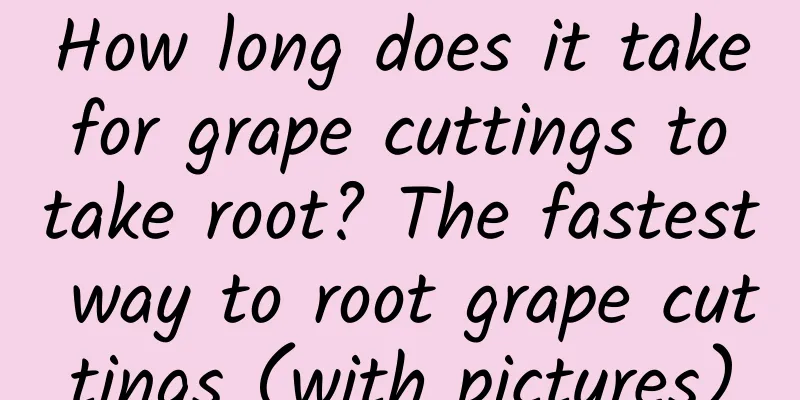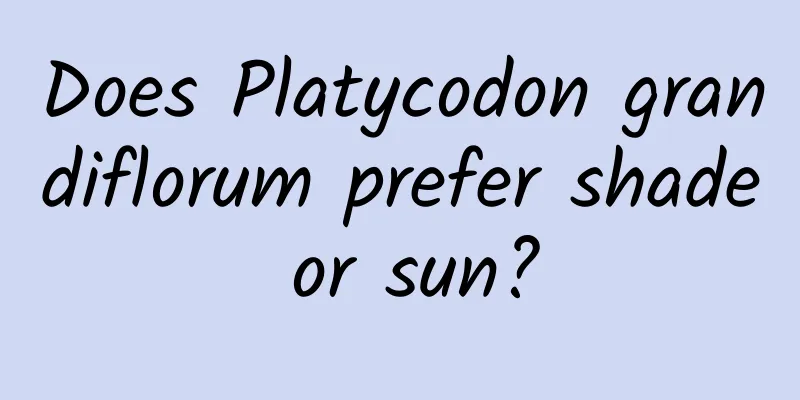How to apply fertilizer to make the tangerine fruit expand quickly (when to apply fertilizer to the tangerine fruit)

|
It takes a long time for the ovary of citrus fruit to swell after flowering and for the fruit to mature . As the fruit grows, the tissue structure and physiological changes also occur inside, showing a certain stage. First, the cells inside the fruit divide and the outer skin of the fruit thickens, followed by the enlargement of the flesh (juice cells). Finally, the peel and flesh show the color and flavor inherent to the mature variety. Therefore, fruit growth and development can be divided into several stages according to the cell behavior and fruit volume changes during the development process: cell division stage, fruit enlargement stage and fruit ripening stage . 1. Cell division period (after flowering to May)The cell division period mainly involves repeated division of cells in the pericarp and juice sac to enlarge the fruit body, which is actually an increase in the number of cell nuclei, i.e., nucleoplasm. According to research on sweet oranges, lemons, and mandarin oranges , the primitive cells of the juice sac are the epidermal hairs on the carpels, which begin to divide during flowering and divide more vigorously after small fruits are formed. Until the entire juice sac cell is vacuolated and the vacuolated juice sac fills the entire sac valve, the juice sac cell stops dividing and turns to cell enlargement. The pericarp cells also begin to divide before flowering, and the pericarp thickens most rapidly during flowering. The increase in fruit size during this period is mainly due to the thickening of the pericarp. By the end of cell division, the thickness of the sweet orange pericarp accounts for about 2/3 of the entire fruit cross-section. The cell division stage requires relatively complete organic and inorganic nutrition, which mainly relies on the nutrients stored in the branches and leaves of the tree. New roots and new leaves are insufficient. Therefore, spraying some fast-acting nitrogen, phosphorus, potassium and other fertilizers in appropriate amounts can promote cell division and increase fruit setting rate . If it is a year with high temperatures, you can spray an appropriate amount of low-concentration auxin combined with nitrogen nutrition to protect flowers and fruits , and ensure that the young fruits get enough nutrients to expand smoothly. 2. Fruit expansion period (approximately June-July)During this period, the juice sacs and cells of the spongy layer of the fruit increase in size, but the juice sacs still increase slowly, mainly because the spongy layer continues to thicken. After the peel stops thickening, it enters the late stage of cell enlargement . During this period, the seeds develop rapidly, and the endosperm in the seeds is gradually absorbed and solidified by the embryo and cotyledons (for seeded Wogan). Physiological fruit drop gradually decreases until it stops completely. Cell enlargement is mainly an increase in cell volume, mainly due to the accumulation of internal components such as water, carbohydrates, proteins and fats. The protein nitrogen content increases rapidly and reaches the highest level when the peel reaches its thickest. The water content of the fruit gradually increases. Pectin accumulates in large quantities, especially in the spongy layer of the peel, which plays an important role in the development of the fruit. The vascular tissue inside the fruit is not yet fully developed during this period. The RNA content is still high, indicating that the cell state is still relatively complete and the division activity is strong. After 3 months of development of the young fruit, the RNA content decreases rapidly. The auxin content in the fruit gradually increases and reaches a peak when the fruit stops falling. (June-July) Since this period is still in the physiological fruit drop period, the sap concentration has been greatly reduced, and it has entered the hot and rainy season, which is the summer shoot growth period for most regions and varieties. Summer shoots are the strongest metabolic reservoirs with strong pulling force. If there are too many summer shoots, fruit drop will be serious . If the juice sac cells in this period do not increase sufficiently, it will affect the increase of juice sac cells in the next period and affect the size of the fruit. Therefore, attention should still be paid to the contradiction between shoots and fruits during this period, and summer shoots should be properly controlled to prevent them from competing for too many nutrients, inhibiting the division of juice sac cells, and affecting the expansion of fruits in the later stage. We should be able to better grasp the rhythm of fruit stabilization and fruit expansion. If we persist for a while, control the summer shoots, and supplement nutrition, it will be easy to stabilize the fruit . After the fruit is firmly set, how can we quickly expand the fruit in June and July to lay the foundation for early maturity? In June, the physiological fruit drop of citrus has become stable, and some varieties are basically coming to an end, so the fruit will soon be firmly set. Next, it is the period of promoting fruit expansion. If you want the fruit to mature early, the premise is to make the fruit expand quickly. Only by laying a good foundation during the fruit expansion period can you be one step ahead after entering the color change period. So what should we do now? 1. Fruit development status and fertilizer requirements of citrus during this periodDuring this period, citrus fruits are in the process of fruit expansion. The peel cells are dividing, and the juice sacs and spongy layer cells begin to fill and expand, requiring a large amount of organic and inorganic nutrients . The accumulation of internal substances such as water, carbohydrates, protein and fat, and the supply of inorganic nutrients such as nitrogen, potassium, calcium and magnesium are very important for fruit expansion. Therefore, proper pruning to maintain tree ventilation and light transmission to improve photosynthetic efficiency and timely supplement of relevant nutrients to the roots and leaves are very important . (1) The contradiction between shoots and fruits still exists . After June, if the sugar orange trees are vigorous, continue to control the shoots, and if the trees are weak and have many fruits, it is appropriate to leave all the summer shoots. If the Wogan trees are just beginning to bear fruit, it is appropriate to control the shoots, and if the trees are moderate and have many fruits, there is no need to deliberately control the summer shoots. After June, there is no need to control the branches of mediocre trees with many fruits. (2) Weak trees begin to have fruit-to-fruit conflicts . In June and July, large and medium-sized fruit varieties (such as Wogan) can be thinned appropriately. When the autumn shoots of Sugar Orange are about to be released, the shoots should be replaced with fruits to reduce the competition for nutrients among the fruits, which is not conducive to fruit expansion. If the fruit is to expand quickly, fruit thinning is a very effective measure. (3) Early control and killing of shoots have a greater impact on the peripheral young fruits . If the shoots are controlled multiple times, there is a possibility of dead fruit, and if the shoots are killed, there is a possibility of fruit with flowery skin. Therefore, it is necessary to spray the leaves with corresponding nutrients to quickly alleviate the dead fruit situation and promote normal fruit expansion. The fruit peel caused by killing the shoots can only be alleviated by foliar nutrition. Minor peels should be repaired as early as possible, but for severe cases, the repair is limited and the fruit will ultimately remain peeled and lose its commercial value. The consequences of killing the shoots are so severe that the skin is damaged and the repair is limited 2. Do a good job in citrus field management Fertilizer is absorbed into the tree body along with water. Without water, nutrients cannot be absorbed. Therefore, drought is not allowed. Too much water will damage the roots, which is not good for fruit expansion. Therefore, waterlogging is not allowed. Therefore, in order for citrus fruits to expand, the field must be able to be irrigated and drained . In addition, in the high temperature of summer, proper grass cover can reduce the field temperature, protect the vitality of the root system, and facilitate nutrient absorption. Furthermore, in the high temperature and heavy rain in summer, it is easy to breed diseases and insect pests. Timely prevention and control are necessary to protect leaves and fruits. Only when the leaves are good can the fruits be good . Ulcer is at high risk, prevention and treatment should be timely, and leaf protection is critical 3. Do a good job in citrus nutrition management Recommended root nutrition (fruit-enlarging fertilizer) in June and July : For sugar oranges (no fertilizer for vigorous trees) and citrus fruits such as Wogan (few fruits but vigorous trees), apply low-nitrogen and high-potassium water-soluble fertilizer by flushing or broadcasting. Hybrid citrus fruits such as Wogan and Gonggan, and orange trees (trees with many fruits): flush or broadcast medium-nitrogen and high-potassium water-soluble fertilizers. The peel is so rough that it needs to be sprayed at least 2-3 times with amino acids, sugar alcohols, calcium, boron and trace elements. Leaf nutrition program: Spraying contains amino acids, sugar alcohols, calcium, boron and trace elements to activate leaves, relieve shoot control and stiff fruit, repair slight flower skin, relieve deformed pumpkin fruit and rough-skinned fruit, beautify leaves and fruit, expand fruit, prevent cracking and resist sunburn, etc. |
<<: How to grow grapefruit for high yield (how to grow big and delicious grapefruit)
Recommend
What is the best fertilizer for Begonia?
Fertilizing Begonia Begonia is a fertilizer-lovin...
When is the best time to transplant green onions?
Scallions are an indispensable vegetable and cond...
How long is the growth cycle of Chuanxiong?
Introduction to the growth of Chuanxiong Chuanxio...
Complete knowledge of Crassulaceae
Succulent plants are becoming increasingly popula...
The main varieties of Clivia miniata
1. Main varieties It mainly includes three variet...
How to grow peony
1. Breeding environment 1. Soil: When growing peo...
The difference between mountain cherry and elmleaf plum
1. Difference between branches and leaves Mountai...
How does Pendanthus odorifera survive the winter?
1. Move indoors When winter comes, you should mov...
Taboos on the placement of lucky bamboo
1. Wealth Position Although lucky bamboo is very ...
Can I grow white roses at home?
Can I grow white roses at home? Generally, white ...
How to plant Veronica seeds
1. Prepare the environment for seedling cultivati...
How to grow camellia well?
Camellia, as one of the top ten famous flowers in...
How can the dead green radish be resurrected?
1. Check the roots After the green radish is froz...
Cultivation methods and precautions of Chinese hydrangea (how to care for Chinese hydrangea)
Chinese hydrangea is very easy to grow and it is ...
How to Make White Chrysanthemums Bloom for Christmas
Actual flowering period This kind of flower can l...









